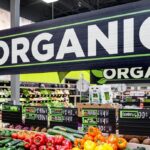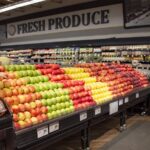
More than four years after the onset of the Covid pandemic that put our collective health at risk, rattled the economy and turned grocery shopping into an even more unpleasant and costly chore, we’re still suffering from it. Grocery prices are still higher, coupons and promotions are still fewer, and a new government report says the pandemic may have shown that the way groceries are bought and sold is broken – and we could be one unforeseen circumstance away from living through Covid-era chaos at the grocery store all over again.
The Federal Trade Commission has completed a study it began nearly two and a half years ago, into the causes of the “empty shelves and sky-high prices” that we all experienced and still haven’t quite recovered from.
Perhaps the most damning conclusion in the FTC’s “Feeding America in a Time of Crisis” report is that some retailers, wholesalers and manufacturers “seem to have used rising costs as an opportunity to further hike prices to increase their profits, and profits remain elevated even as supply chain pressures have eased.” The FTC found that retailers’ revenue has been rising at a faster rate than their costs, so the excuse that they’re just passing on their own higher costs to shoppers isn’t entirely the case. Supply chain challenges were real, the FTC concluded, but “large market participants accelerated and distorted the negative effects associated with supply chain disruptions” in order to pad their own pockets.
In addition, the report found that smaller grocery retailers were more likely to experience empty shelves, as their larger rivals exerted financial pressure on suppliers to favor them when delivering products that were in short supply. The report also highlighted the dangers of the consolidation of suppliers, leaving retailers with few options when those suppliers couldn’t deliver what they needed.
And the report paid particular attention to the role of promotions – namely, what happened when weekly sale prices and stock-up specials dried up, and how the traditional supermarket strategy of high everyday prices and low weekly sale prices can leave us all vulnerable in the future.
Weekly sales, store coupons and other temporary price reductions are mostly funded by manufacturer trade promotions. Manufacturers provide funds to retailers that they can use to promote the manufacturers’ products by putting them on sale. That’s as compared to other retailers, most often larger ones like Walmart or Costco, that instead follow the “everyday low prices” approach, eschewing trade promotion funds in favor of consistently low wholesale prices.
But when shelves were empty anyway, there wasn’t much point in putting anything on sale. So the traditional strategy of “high everyday prices and low weekly sale prices” left us paying high everyday prices for just about everything.
Unless, that is, you shopped at one of those large retailers that offer everyday low prices instead. The dual advantage these large retailers had – using their size to pressure suppliers to keep their shelves stocked, while charging consistently low prices for those products – drove more shoppers through their doors, increasing their profits while their traditional grocery retail competitors suffered.
So is everyday low pricing the way to go? Or does that give these large retailers an unfair advantage when the chips are down? The FTC said its investigation showed that many traditional grocery retailers are unduly dependent on trade promotional dollars, which has become “a large and important source of their revenue.” When those funds faded away, traditional grocers were more severely disadvantaged, which could have made them more likely to raise prices to make up for those lost dollars.
The FTC seemed troubled by this, suggesting the entire system should be examined further. “The significant size of trade promotions suggests further study of their economic impact may be warranted in light of their potential competitive impacts,” the report stated.
Whether it’s trade promotions, wholesalers’ favorable treatment for some retailers, supply chain bottlenecks, or retail profiteering, the report warns the system may be vulnerable to future shocks – which means out-of-stocks, soaring prices and an imbalance in grocery competition could happen again.
“Our grocery supply chain had been ‘optimized’ for good times,” FTC Commissioner Rebecca Kelly Slaughter said in a statement. “But these systems were incredibly brittle.” Since then, supply chain bottlenecks have cleared up, shelves are more fully stocked and even promotions are coming back. But “the indications that profits may have increased during the same time and remain high may be further indication that consumers are not benefitting from competitive markets in the ways they should when they do their grocery shopping,” Slaughter warned.
The National Grocers Association, a trade group representing the independent supermarket industry, responded to the FTC’s findings with a big “I told you so.”
“Independent grocers have been arguing for years that the nation’s biggest chains… are abusing their immense economic power to the detriment of competition and American consumers,” the NGA said in a statement. It went on to decry “decades of lax antitrust enforcement” that disadvantage smaller competitors and consumers alike, and called for Congressional hearings to help address the issues raised in the report.
It is perhaps noteworthy, then, that the FTC’s report comes just as it appears to be stepping up antitrust enforcement, by challenging the proposed merger of Kroger and Albertsons. The two grocery retailers say they need to combine in order to compete with their larger rivals. Yet this FTC study raises concerns about the dominance of those large retailers, while also calling into question the very business model that traditional grocery chains rely on to compete with them.
So whether you prefer shopping the sales or seeking out everyday low prices in order to save money on your groceries, both systems leave something to be desired, this report concludes. And a shaky supply system, vulnerable to disruption, that still somehow results in higher profits for most all businesses involved, could leave us all paying the price.
Image source: Walmart













